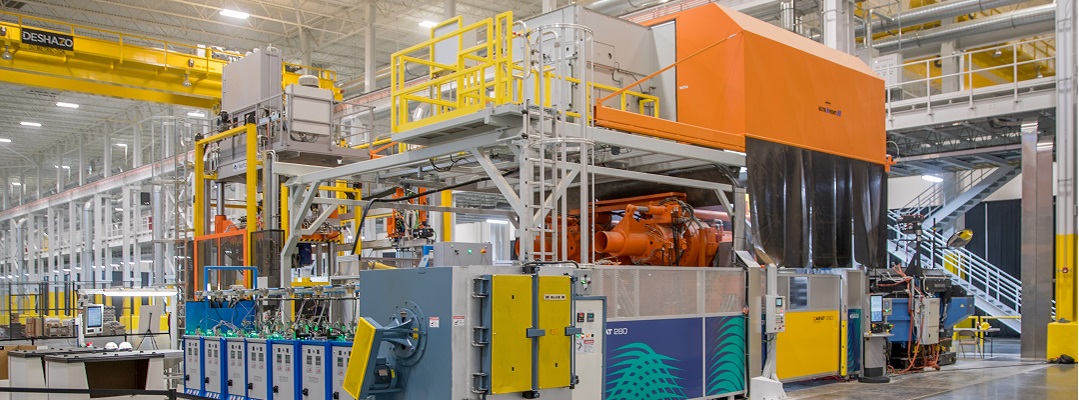Die casting
Die Casting

Die casting is a method of metal processing belonging to the process category of shaping by casting using permanent moulds. Die casting is used especially for the series or mass production of components made out of metal or metal alloys, e.g. in the automotive industry. It is used to produce large and complex components with thin walls.
For the die casting process, a negative mould consisting of two or more parts is created for the respective component. This so-called casting mould is then clamped in the die casting machine and filled with a liquid casting material under high pressure. Typical casting materials are aluminium, metal alloys or magnesium. This process results in castings with very smooth clean surfaces and contours, high strength values and high dimensional accuracy, which rarely require finishing. In addition, die casting is particularly characterized by its high productivity – thanks to the short production cycle of die casting machines, up to 1,000 castings per hour can be produced. This allows for a high level of production planning and process reliability. Therefore, die casting is one of the most economical processes for metal processing.
Die casting can be divided in hot chamber and cold chamber die casting (see illustration). The difference lies in the way the liquid casting material, the so-called “melt”, is “shot” into the die casting mould.
In the hot chamber process, the holding furnace containing the melt and the die-casting mould are directly connected to each other. Both the casting plunger and the pouring vessel are inside the holding furnace. The advantage: In this process type, the exact amount of melt is pressed into the die casting mould. When the casting plunger is retracted, the remaining melt is conveyed back into the holding furnace through vacuum. The hot chamber process is used exclusively for the processing of tin, zinc and magnesium alloys, as other materials have a corrosive effect on the machine components.
In the cold chamber process, however, the casting chamber is outside the holding furnace. For each casting process the melt is filled anew into the casting chamber. This process requires more melt than is needed to fill the mould. This ensures that the melt fills the mould completely without any air bubbles other contaminations. After cooling down the casting contains a so-called casting residue, which can then be removed and returned to the holding furnace. The cold chamber process is used to produce castings from aluminum, copper and magnesium alloys.
Die casting is highly energy and exhaust air intensive: The operation of heating furnaces, die casting machines and ventilation systems requires large amounts of energy, e.g. electricity or gas. At the same time, the exhaust air is highly filter-intensive, as abhesive are applied to the moulds during the manufacturing process. When the hot melt enters the casting mould, these abhesives evaporate and release oily, pasty aerosols, dust and vapors into the exhaust air. Therefore, in addition to the separation of odours and vapours, comprehensive particle filtration is also important. At the same time, metal-processing companies are subject to strict regulations on air pollution control, as specified in national and regional legal regulations, requiring a high degree of exhaust air purification.
The KMA ULTRAVENT® exhaust air filtration system is specifically adapted to the requirements of exhaust air purification in die casting. Thanks to its modular design, it can be individually adapted to the exhaust air composition and seamlessly integrated into existing production processes. With a separation efficiency by up to 99.8% the KMA ULTRAVENT® is an energy-efficient alternative to conventional ventilation systems.
Related links
Related posts







